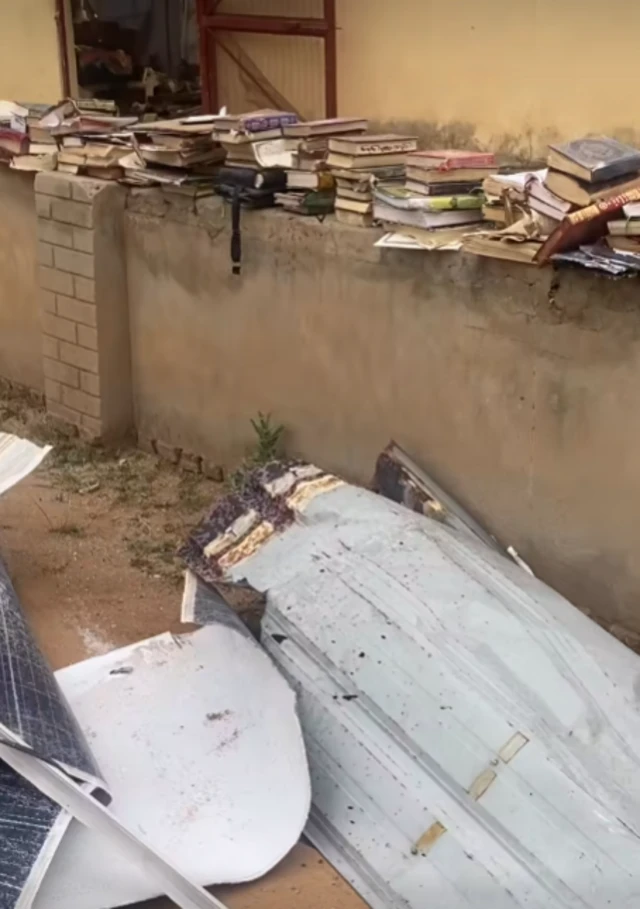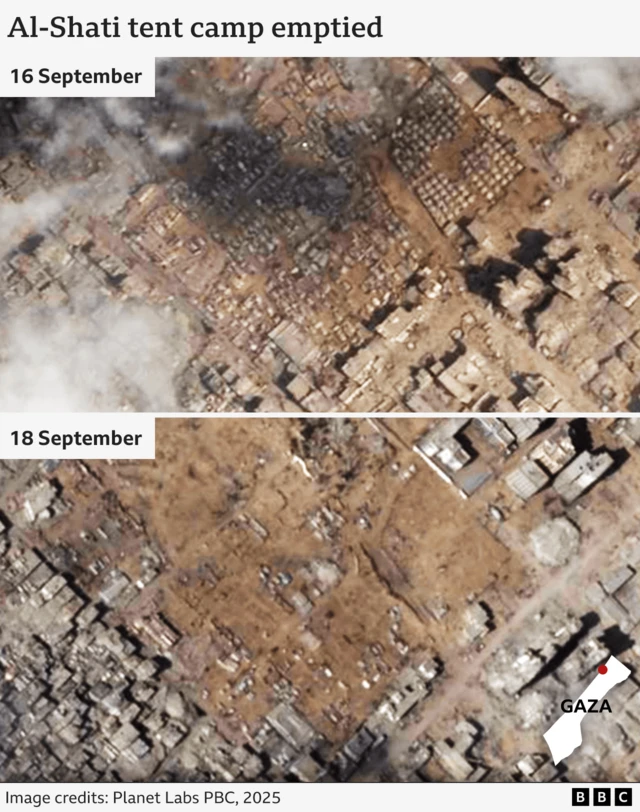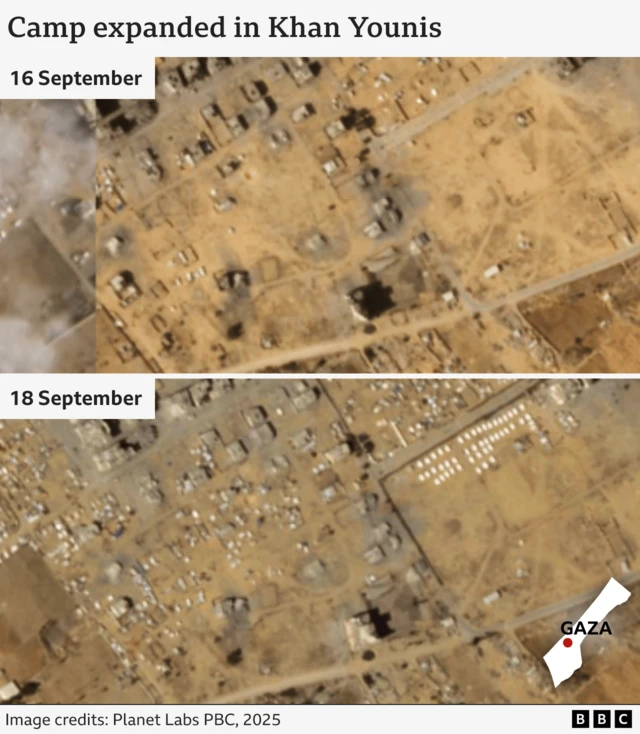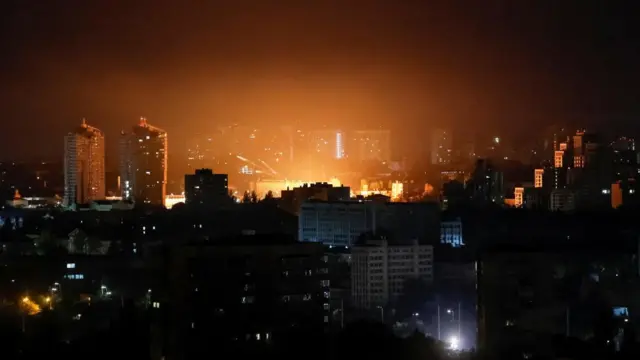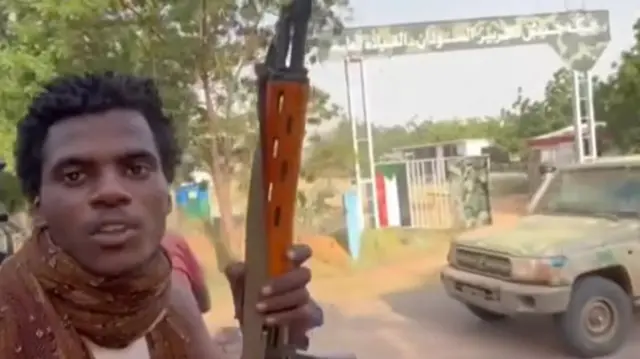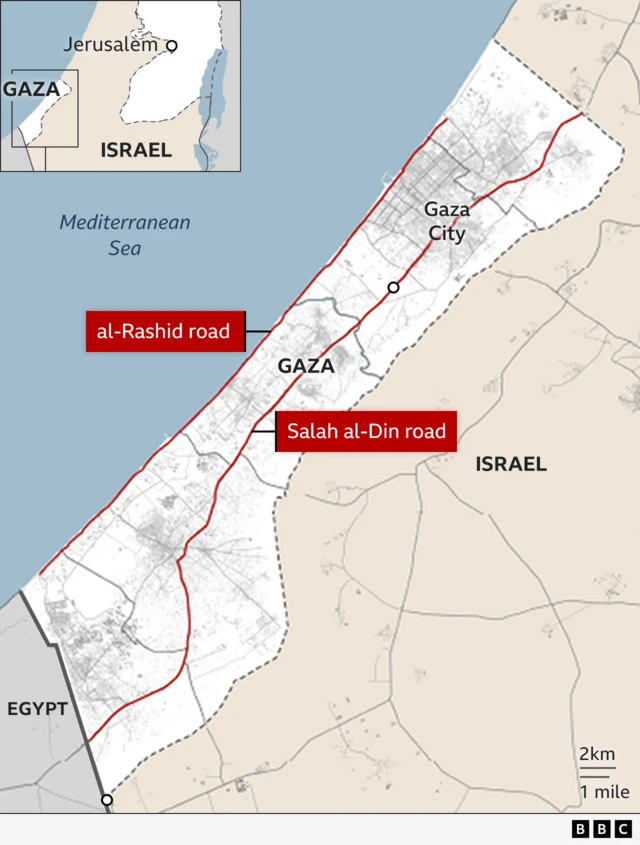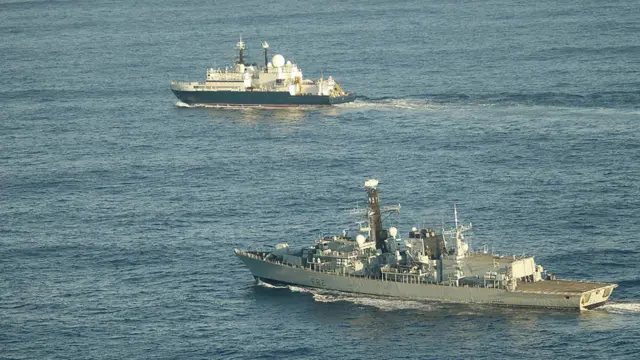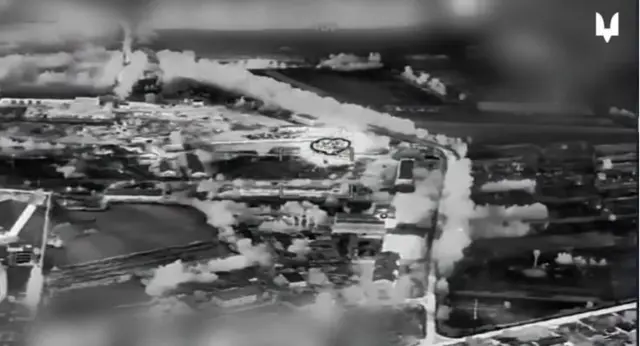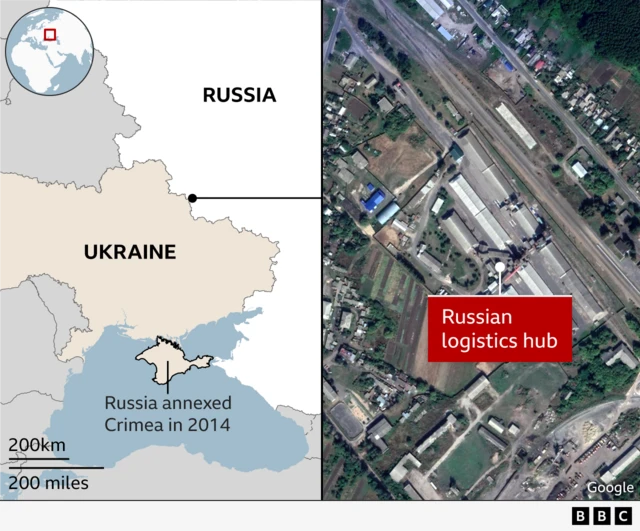Bringing a busy week to a closepublished at 17:19 BST 19 September
 Lucy Gilder
Lucy Gilder
BBC Verify journalist
We’re about to end our BBC Verify Live coverage after a busy week of fact-checking and verification work, thanks for joining us.
Today, we’ve continued to use satellite imagery to track and gather information about the Israeli military’s ongoing ground offensive in Gaza City. Our analysis of these images showed that several camps for displaced people had been dismantled as people continue to evacuate Gaza’s largest city.
The team also verified multiple aerial strikes from Ukraine on an army logistics hub inside Russia, as well as a deadly strike on worshippers in a mosque in the besieged Sudanese city of El-Fasher.
And as President Donald Trump returned home from his UK state visit, we fact-checked a claim he made on Air Force One about crime in London under Mayor Sadiq Khan. You can watch a video where we assess this claim on the BBC’s social media accounts later.
Over the weekend, our colleagues will continue to monitor developments in Gaza and Ukraine to better inform the BBC’s coverage - and our regular live page will return on Monday.


